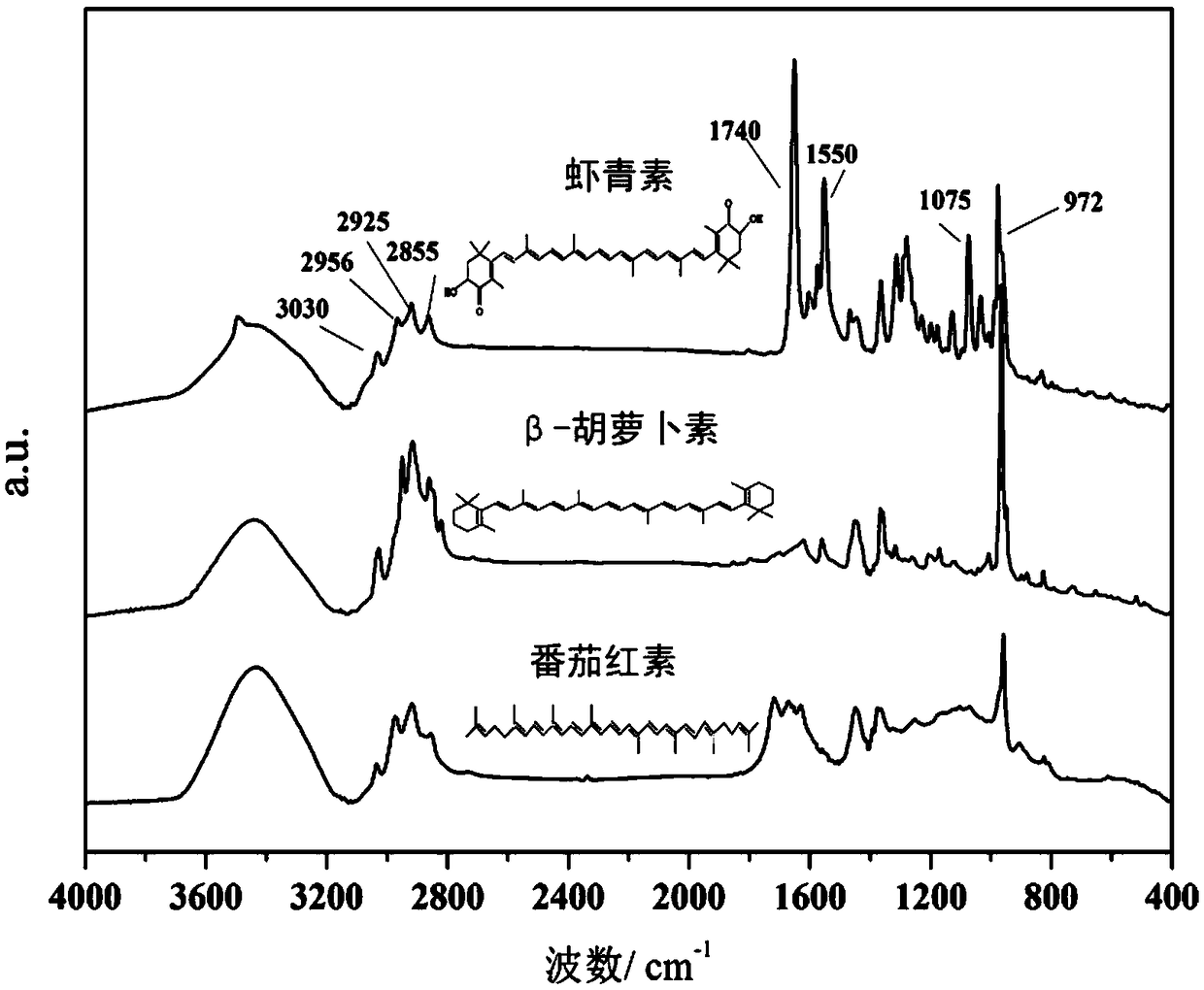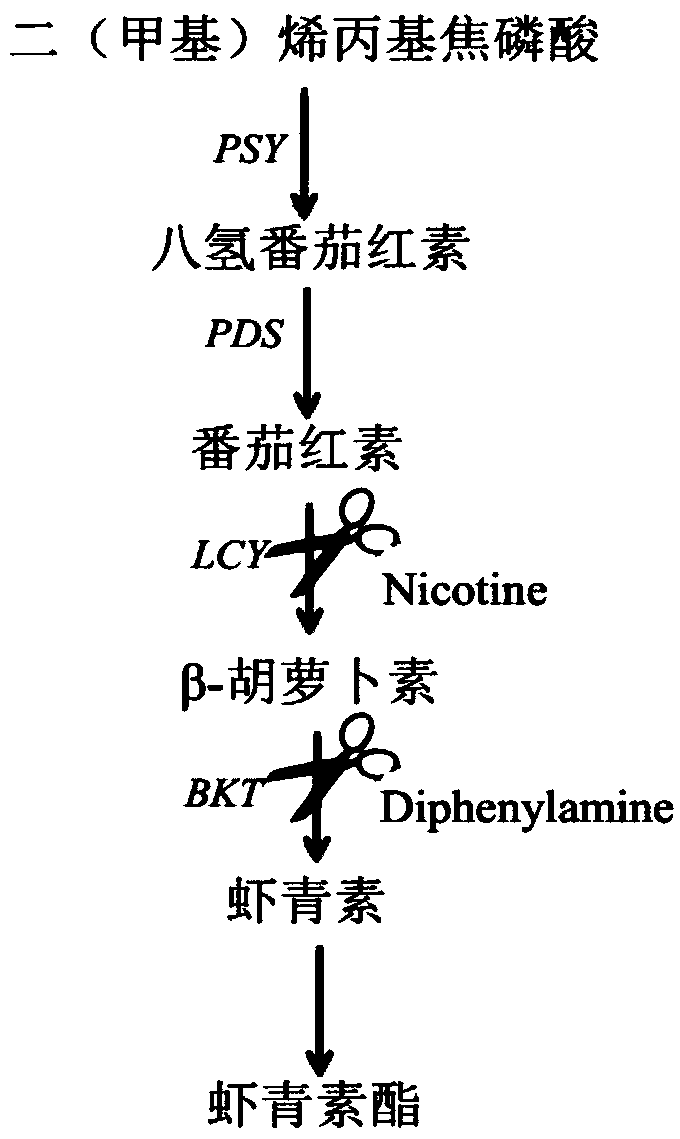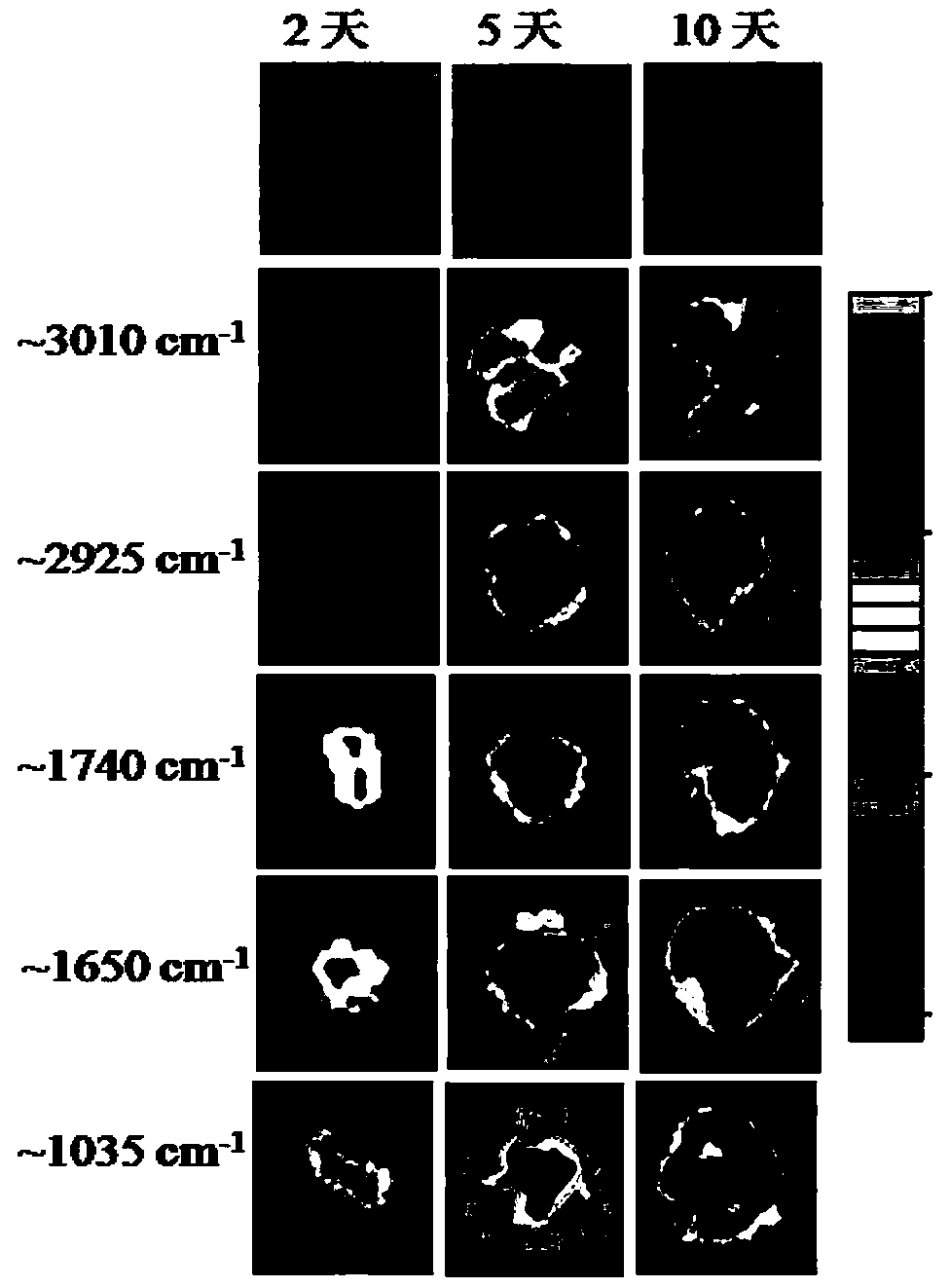Research method for synthetic process of haematococcus pluvialis astaxanthin based on infrared spectroscopy microscopic imaging technology
A technology of Haematococcus pluvialis and infrared spectroscopy, applied in the field of research on the synthesis process of astaxanthin from Haematococcus pluvialls, can solve the problems of single component, cumbersome steps, environmental pollution, etc., achieve low cost, simple steps, and analytical short time effect
- Summary
- Abstract
- Description
- Claims
- Application Information
AI Technical Summary
Problems solved by technology
Method used
Image
Examples
Embodiment 1
[0032] A method for studying the synthetic process of Haematococcus pluvialis astaxanthin based on infrared spectrum microscopic imaging technology, comprising the following steps:
[0033] S1. Inoculate Haematococcus pluvialis into sterile BBM medium at a weight ratio of 10%, under the conditions of light intensity 2000lx, temperature 23°C, light-dark cycle 12h / 12h, and hand frequency 3 times / day Cultivate and obtain Haematococcus pluvialis strain;
[0034] S2. Adding nicotine to the culture medium of Haematococcus pluvialis to prepare a treatment solution containing nicotine at a concentration of 60 μM, and cultivating it for 2 days, 5 days and 10 days under a strong light condition of 5500 lx to induce the accumulation of astaxanthin;
[0035] S3. The astaxanthin, β-carotene and lycopene samples were scanned 64 times by the infrared spectrometer respectively, and the measurement range was 4000-400cm -1 , resolution 4cm -1 The infrared spectrum was measured under the condi...
Embodiment 2
[0039] A method for studying the synthetic process of Haematococcus pluvialis astaxanthin based on infrared spectrum microscopic imaging technology, comprising the following steps:
[0040] S1. Inoculate Haematococcus pluvialis in a sterile BBM medium at a weight ratio of 20%, under the conditions of light intensity 3000lx, temperature 26°C, light-dark cycle 12h / 12h, and hand shaking frequency 3 times / day Cultivate and obtain Haematococcus pluvialis strain;
[0041] S2. Adding nicotine to the culture medium of Haematococcus pluvialis to prepare a treatment solution containing nicotine at a concentration of 90 μM, and cultivating it for 2 days, 5 days and 10 days under strong light conditions of 6500 lx to induce the accumulation of astaxanthin;
[0042] S3. The astaxanthin, β-carotene and lycopene samples were scanned 64 times by the infrared spectrometer respectively, and the measurement range was 4000-400cm -1 , resolution 4cm -1 The infrared spectrum was measured under th...
Embodiment 3
[0046] A method for studying the synthetic process of Haematococcus pluvialis astaxanthin based on infrared spectrum microscopic imaging technology, comprising the following steps:
[0047] S1. Inoculate Haematococcus pluvialis into sterile BBM medium at a weight ratio of 10%, under the conditions of light intensity 2000lx, temperature 25°C, light-dark cycle 12h / 12h, and hand frequency 3 times / day Cultivate and obtain Haematococcus pluvialis strain;
[0048] S2. Adding diphenylamine to the culture medium of Haematococcus pluvialis to prepare a treatment solution containing diphenylamine at a concentration of 0.2mM, and cultivating it for 2 days, 5 days and 10 days under strong light conditions of 6000lx to induce astaxanthin accumulation;
[0049] S3. The astaxanthin, β-carotene and lycopene samples were scanned 64 times by the infrared spectrometer respectively, and the measurement range was 4000-400cm -1 , resolution 4cm -1 The infrared spectrum was measured under the con...
PUM
 Login to View More
Login to View More Abstract
Description
Claims
Application Information
 Login to View More
Login to View More - R&D
- Intellectual Property
- Life Sciences
- Materials
- Tech Scout
- Unparalleled Data Quality
- Higher Quality Content
- 60% Fewer Hallucinations
Browse by: Latest US Patents, China's latest patents, Technical Efficacy Thesaurus, Application Domain, Technology Topic, Popular Technical Reports.
© 2025 PatSnap. All rights reserved.Legal|Privacy policy|Modern Slavery Act Transparency Statement|Sitemap|About US| Contact US: help@patsnap.com



